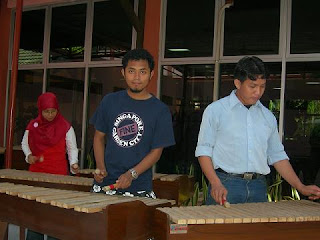
Prambanan temple is incredibly beautiful building built in the 10th century during the reigns of two kings, and Rakai Rakai Pikatan Balitung. Rose as high as 47 feet (5 meters higher than Borobudur temple), the establishment of this temple has fulfilled the desire maker, shows the triumph of Hinduism in Java. This temple is located 17 kilometers from the city center, in the middle of the area that is now a beautiful park.
There is a legend that Javanese people always tell about this temple. Once, a man named Bandung Bondowoso loved Roro Jonggrang. Because no love, Jonggrang asked Bondowoso make 1000 temples with statues in one night. The request was nearly fulfilled before Jonggrang asked the villagers to pound rice and make a big fire that created an atmosphere like the morning. New Bondowoso can make 999 statues cursed Jonggrang into the statue in 1000 because he felt cheated.
Prambanan temple has 3 main temples in the main yard, namely Vishnu, Brahma, and Shiva. These three temples are symbols of Trimurti in Hindu belief. All of them face east. Each main temple has accompanying temple facing to the west, namely Nandini for Shiva, Swan to Brahma, and Garuda for Vishnu. In addition, there are still squeeze 2 temple, the temple curtain 4, and 4 corner temples. Meanwhile, the second page had 224 temples.
Entering the Shiva temple located in the middle and the highest building, you will find a room 4. One main room contains a statue of Shiva, while the other 3 rooms each containing a statue of Durga (Shiva's wife), Agastya (Shiva's teacher), and Ganesha (Shiva's son). Durga is mentioned as the statue of Roro Jonggrang described in the legend above.
In the Vishnu temple is located in the north of Shiva temple, you will only see one room containing a statue of Vishnu. Similarly, the Brahma temple located on the south side of Shiva temple, you will only find one room with a statue of Brahma.
Accompanying temple is Garuda temple lure is located near the Vishnu temple. This temple save the story of a half-bird figure named Garuda. Garuda is a mystical bird in Hindu mythology, who was gold, white-faced, red-winged, beaked and winged like an eagle. Estimated, the figure is Hindu adaptation of Bennu figure (means 'rises' or 'shine', usually associated with the god Re) in ancient Egyptian mythology or Phoenix in Old Greek mythology. Garuda can save his mother from the curse of Aruna (Garuda's brother who was born handicapped) by stealing Tirta Amrita (holy water of the gods).
The ability to save was admired by many people until now and used for various purposes. Indonesia used it to sign the state. That said, the creator of the emblem of Garuda Pancasila find inspiration in this temple. Other countries also use it to sign the country is Thailand, with the same reason but adaptation forms and different appearance. In Thailand, Garuda is known as Pha recruited or recruited.
Prambanan temple also has a load relief Ramayana story. According to experts, the relief was similar to the Ramayana story is revealed through oral traditions. Another interesting relief is Kalpataru tree that the Hindu religion is considered as a tree of life, sustainability and environmental compatibility. In Prambanan, relief of Kalpataru tree is described lions flanking the center. The existence of this tree makes experts consider that the 9th century have wisdom in managing the environment.
Just as the figure of Garuda, Kalpataru is now also used for various purposes. In Indonesia, Kalpataru became a symbol of the Earth (WALHI). In fact, some scientists in Bali to develop the concept of Tri Hita Karana for environmental conservation by seeing Kalpataru relief in this temple. Tree of life also can be found in the mountains that used to open the puppet arts. A proof that the relief panels in Prambanan has worldwide.
If careful, you can also see various birds relief, this time a real bird. Bird reliefs at Prambanan so natural that biologists can identify them even to genus level. One was relief of the Yellow-crested Cockatoo (Cacatua sulphurea) that invite questions. Why, the bird is only found in Masakambing Island, an island in the Java Sea. Then, whether the species was once numerous in Yogyakarta? Please find out the answer myself. Because, until now no one who can solve the mystery.
Well, there are many more to be unearthed at Prambanan. You must not tire of course. If it was finally exhausted, you can rest in the garden around the temple. Interested? Come immediately. Since September 18, 2006, you can enter the zone 1 Prambanan not even get into the temple. Some of the damage caused by the earthquake May 27, 2006 and is now being repaired.





















